Just because you have giant oak trees in the front or the neighbour’s back garage creating an overcast in your backyard doesn’t mean you can’t have some nice greenery. If you’re struggling with growing a lawn in shade, try one of these alternatives instead.
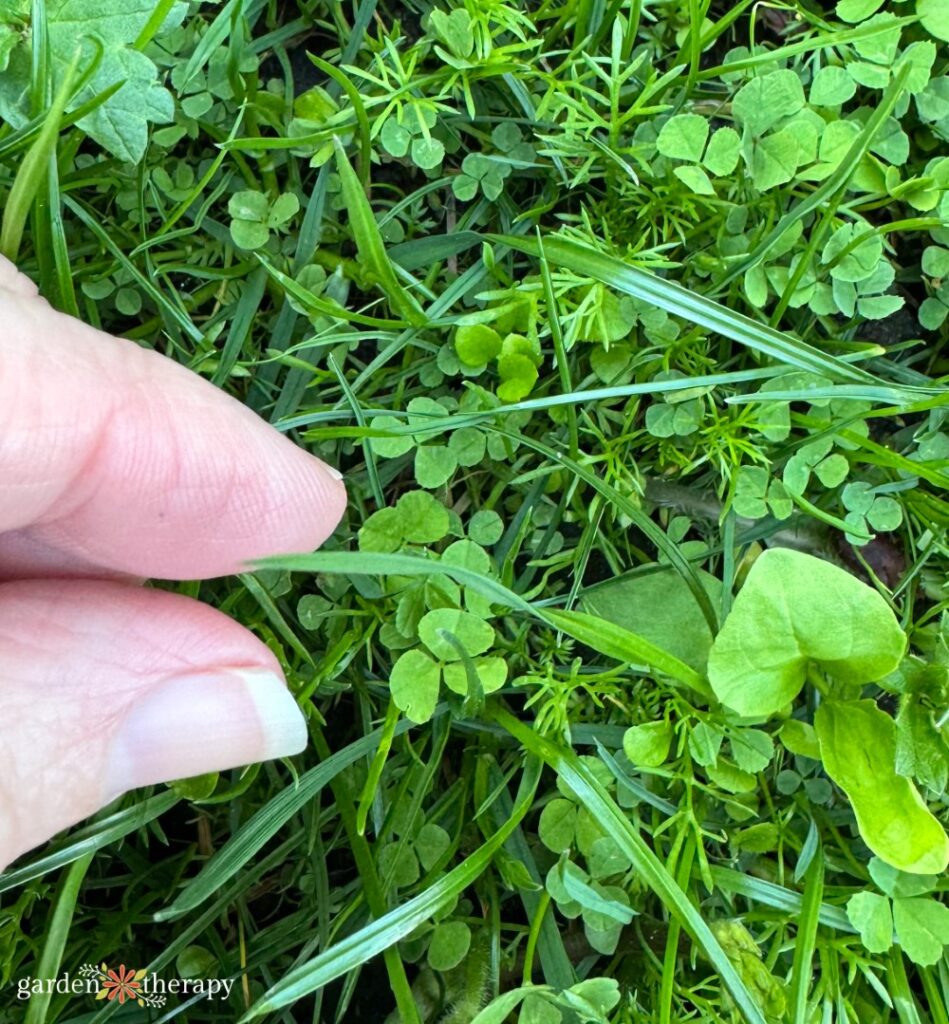
Shade is a gardener’s worst enemy. More often than not, plants want full or partial sun. Even the word shade tolerant is misleading since the plants will not typically thrive in the shade…only tolerate it.
Over the years, I’ve battled many shady areas in my garden. I turned the front yard of my previous house into a shady haven, complete with many plants, a bench, and a fountain.
I’ve also constructed a stacked vertical garden bed to maximize the one sliver of full sun so that I could grow more vegetables.
In my new house, I’m battling some shady lawn areas myself. The key here is that I’m working with the shade, not against it. And you can, too!
In this post ahead…
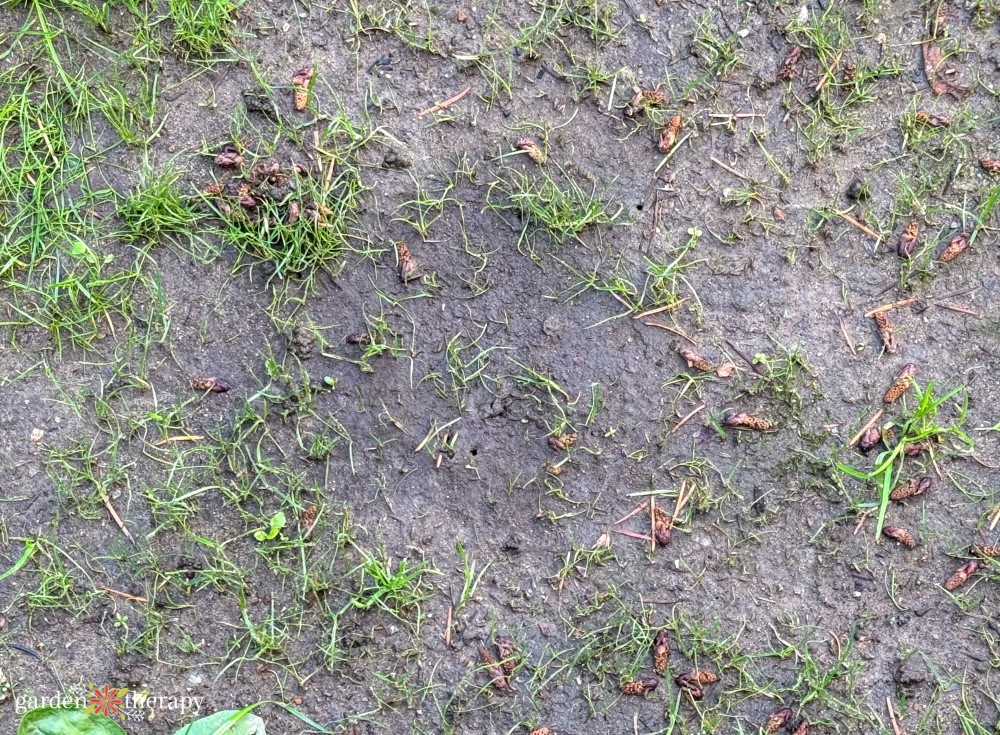

Consider Lawn Alternatives
For anyone who is willing to listen, I’ve been gushing about wildflower lawns. I recently put one in the front yard at my house, and it’s been one of my best decisions ever.
I have some shady spots in my wildflower lawn, primarily along the fence where it blocked the sunlight from streaming in.
In those areas, I had about a third of the germination compared to sunnier spots.
This was a lot better than my backyard. In my backyard, I used a bee alternative lawn mix, and it didn’t grow one bit in the shade.
So the wildflowers get that leg up. I supplemented it with a shade lawn blend to help fill in those spaces, and it worked wonderfully.


Work With What You Have
I often tell people to work with what they have rather than against it. For many, shade is something they can’t control due to large trees or buildings.
While you may want a lawn, the space may just not be able to give you that. You could have a struggling lawn, or you could change it into something else that thrives in the shade and looks infinitely better than patchy grass.
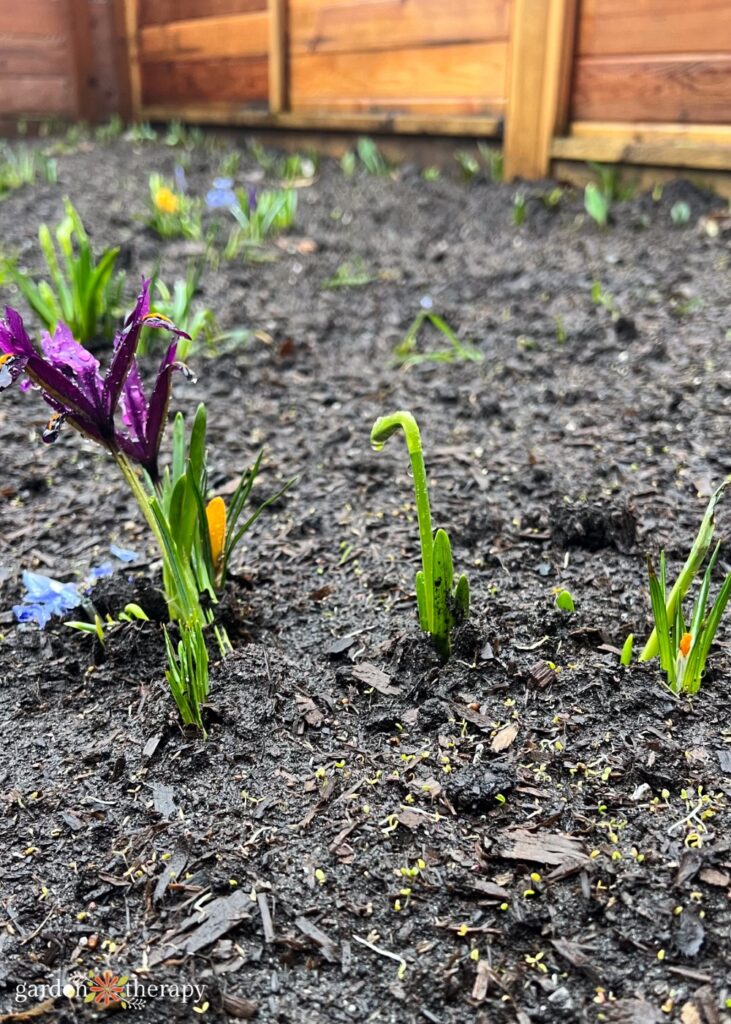

Try a Mossy Approach
One such way to change your mindset is to think of different ways to get a “green carpet” in your yard.
If you live in a climate where moss grows well, I highly recommend you work with the moss in your yard to give you some greenery.
Take some flat stone and lay them down, encouraging the moss to go around them. It will help with the drainage in the area, and keep the area green and beautiful year-round. Plus, the ground will be treadable.


Shade Tolerant Ground Covers
There are many ground cover plants that will happily take over a lawn, even those in a shady area. Head to your garden centre and they should have a groundcover and a shade section for you to browse.
Here are a few shade-tolerant ground covers to keep an eye out for:
- Creeping Jenny—Lysimachia nummularia
- Corsican Mint—Mentha requienii
- Redwood sorrel—Oxalis oregana
- Creeping phlox—Phlox stolonifera
- Golden Japanese Stonecrop—Sedum makinio ‘Ogon’
- Kenilworth Ivy—Cymbalaria muralis
- Alpine Geranium—Erodium
- Sweet Woodruff—Galium odoratum
- Japanese pachysandra—Pachysandra terminalis
- Ostrich fern—Matteuccia struthiopteris
- Creeping juniper—Juniperus horizontalis
- Saxifraga ‘primuloides’
- ‘Georgia Blue’ Speedwell—Veronica umbrosa
Overall, think outside of the box. Once you let go of what you think a traditional lawn should look like, it opens up a whole world of landscaping possibilities. A shady lawn doesn’t have to be a patchy, dry landscape.
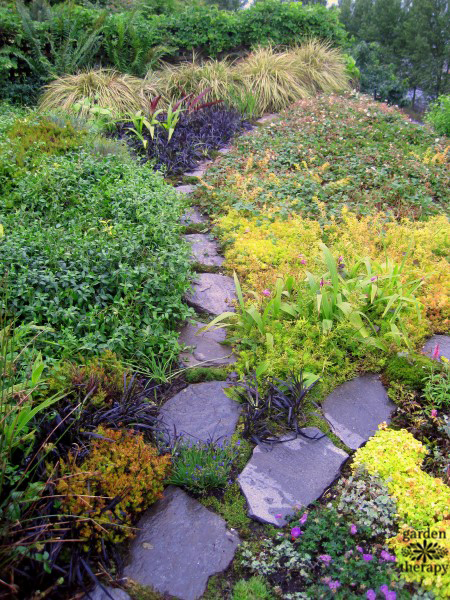

FAQ About Growing a Lawn in Shade
Look specifically for shade blends. Some grasses are more shade tolerant than others, such as hard fescue and zoysia. Keep in mind that even with a shade blend, you can expect this area of your lawn to not be as full and dense as other areas.
The best time of year to plant grass seed is in the fall. You’ll want to do it a month or so ahead of the frost since the current conditions will encourage root growth rather than top growth. This will set you up with a strong lawn the following spring.
I planted my lawn in early spring, since we had a warmer than usual spring, and so I could rely on the rain and moisture ahead of the summer season.
Many trees will take up all the nutrients and moisture from the soil, as well as shading the area below. This means that most grass beneath these trees ends up short and thin.
For this reason, it’s better to plant something either than grass below the trees. Consider shade-tolerant ground covers or moss instead.
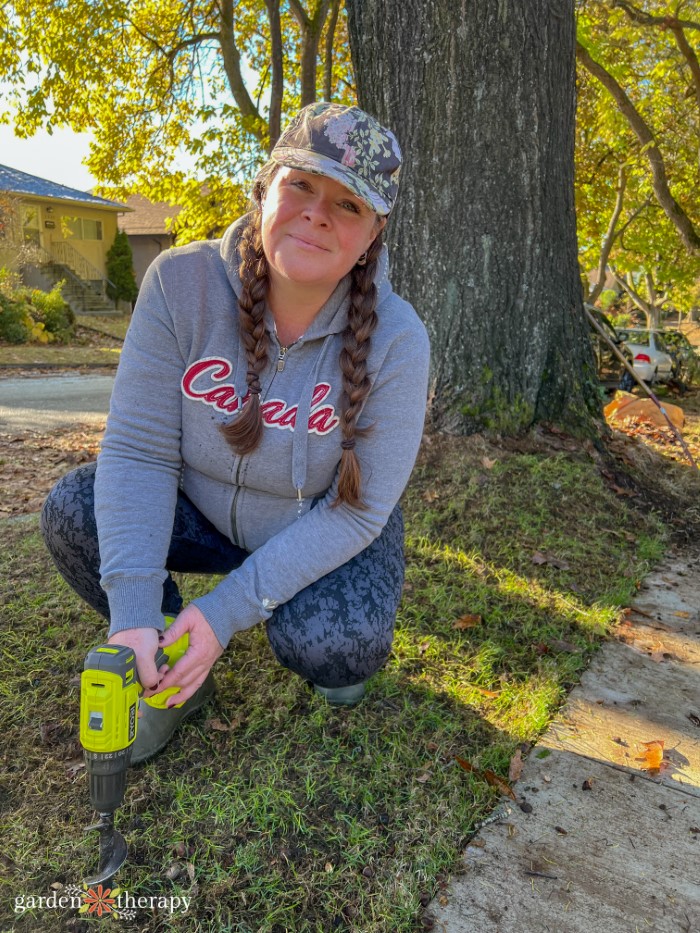

Let me know what you end up trying for your shady lawn in the comments below!

